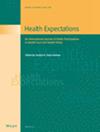Transforming Community-Based Rehabilitation Services: A National Redesign Using Experience-Based Co-Design
Abstract
Background
To understand the experiences of clients, caregivers and staff in community day rehabilitation centres (DRCs) and identify areas for improvement in service processes and the clinical care of stroke, frailty and hip fracture, a national quality improvement project was undertaken using experience-based co-design (EBCD). The goal was to prioritise and co-design system-level changes for community-based rehabilitation care in Singapore.
Methods
The EBCD methodology comprised of eight stages: (1) site observations/time-motion studies, (2) interviews, (3) development of trigger film, (4) staff feedback events, (5) client/caregiver feedback events, (6) joint workshop, (7) small co-design groups and (8) celebration event. In addition, we collected surveys and case note reviews to capture the perceived and actual delivery of guideline-based care for stroke, frailty and hip fracture.
Results
Over a period of 2.6 years, we engaged over 80 clients and caregivers and 250 staff from 20 DRCs in the EBCD process. Triangulation of data from the site observations, interviews, surveys and case note reviews identified four themes: (1) Best practice care, (2) Person-centred care, (3) Allied health professional needs and (4) Service design. Person-centred care was desired by clients, caregivers and staff but was sometimes hindered by factors like tight scheduling and high turnover. Care was partially aligned with international guidelines, though some strongly recommended interventions were inconsistently delivered. Staff interviews and site observations revealed potential for more direct client care, teaching, research and quality improvement, with fewer administrative duties. New care models were sought, including social connections beyond DRCs, clearer maintenance rehabilitation criteria and financial incentives for transitioning to maintenance rehabilitation. A 12-min trigger film based on client/caregiver interviews was used during the feedback events and workshops. Three co-design workgroups were formed to develop clinical practice guidelines for stroke rehabilitation, a workplace learning framework for allied health, and community rehabilitation recommendations.
Conclusion
EBCD was successfully used to identify gaps and co-design system-level solutions to improve community-based rehabilitation care in Singapore. Further solutions at the organisational and individual levels are needed.
Patient or Public Contribution
Our study used EBCD to actively involve clients, caregivers and healthcare staff. Clients with lived experience of stroke, frailty and hip fracture identified key priorities and contributed to qualitative data interpretation during the feedback event. Notably, a trigger film incorporating clients' and caregivers' experiences of community rehabilitation services was developed and verified for accuracy during the feedback event, before being played at the joint workshop for all. During the joint workshop, priority statements for discussion were collaboratively identified, and solutions were co-developed. Clients and caregivers subsequently contributed to the development of the clinical practice guidelines for stroke rehabilitation. Throughout the project, the insights from clients and caregivers helped to ensure that our study's findings were relevant and actionable. We acknowledge the invaluable role of our patient and public partners in shaping this study and driving meaningful healthcare improvements.


 求助内容:
求助内容: 应助结果提醒方式:
应助结果提醒方式:


